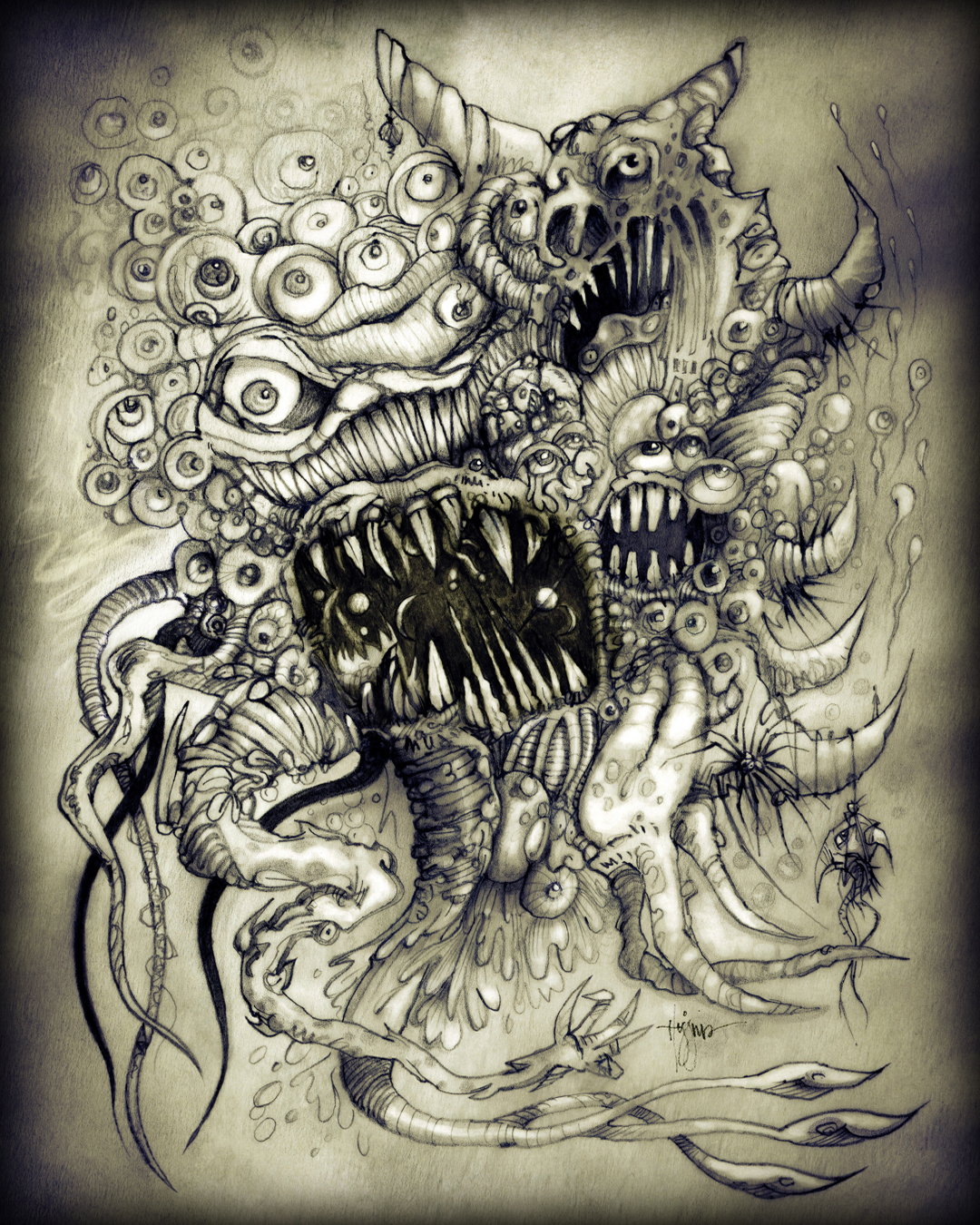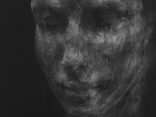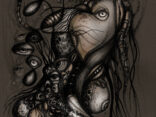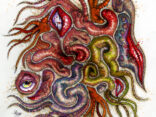Autore
Indice
- Tools and Trends
- Complex and Irrational Numbers
- Complex numbers and Descartes
- Irrationals and real numbers
- Semantics vs the epistemological in maths: some problems with plurals
5.1 Semantics
5.2 Epistemological
- The tension between epistemology and semantics in the field of mathematics and Paul Benacerraf’s Intuitionism
- Concluding Remarks
↓ download pdf
S&F_n. 28_2022
Abstract
The Ideal Nature of Mathematics
In the form of images of the world, cartesian mathematics functions unconditionally. Every real number is a complex one. This applies to rationals and irrationals in mathematics. Mathematics takes authority from within itself, not from the world. Thus, it can make no claims on the world and its reality. Benacerraf makes good use of this as he encounters the problem not only of mathematics but of science in general. If we make a compromise between epistemology and semantics in the realm of mathematics, we shall only blur its ideal nature; we do not know what triggers it. Rayo responds to this challenge by admitting that semantics certainly cannot trespass such limits, whereas Linnebo reluctantly accepts the compromise as a possibility for safeguarding the ideal.
- Tools and Trends
The medium of mathematics may regulate order and reality, but it does not tell us whether there are any objects in the world[1]. This is formulated by Burke[2] following Whitehead[3]: It is not part of the function of pure mathematics to tell us whether or not there exist in the world any collections of 100 objects or any Euclidean triangles; thus, the propositions of pure mathematics are characteristically hypothetical in form. Thus, every logically possible world must be consistent with mathematics. Thus, it is possible to stress the logical features of separate logical world in which logical truths are true and to examine the special intellectual faculties needed for apprehending such truths[4]. In Whitehead, for example, reality and primal facts can be (even contradictorily) whatever science requires them to be[5].
Rational philosophers (among them Leibniz, Russell, Wittgenstein certainly, and even Plato himself) stress the empirical strain of mathematics but cannot show a weakness in their absolutistic and ideal character. The same is true for those idealists who have tried to emphasise empirical variants and parameters in their theories and failed (Frege and Whitehead are two of them; Kripke, Quine and Lukasiewvicz also). Unless one can speak of an alternative to both these spirits, one is bound to fail in one’s critique of mathematics: one must always have in mind that pure mathematics is concerned with what is true as a matter of logical necessity – being thus true in all possible worlds. An alternative theory to either empirical and/or ideal claims (as sketched above in maths) thus refers solely to the logically impossible (simply failing to conform to what is logically necessary). The notions of coherence and impossibility are no longer inconsistent, if we consider what Popper says: that the impossible does not come from the possible. Given this, the impossible is not incoherent with the necessary. This is not, however, to be pursued further the way, say, Aristotle does. We shall only deal in the present article with the shortcomings of attempts to minimise the purity of maths, stressing the resourceful and authoritative quality of mind in imposing mathematical structures and regulations on the world, as do, for example, Descartes and Dummett. And even if mathematics forms the sweetest dream for Man, according to Plato, they are never abstracted from this quality of comfort and cosiness for Man.
Authority here belongs with the mathematical mind, certainly not with the world. This has been ingeniously shown by Virieux-Reymond’s account of the use of imaginary numbers[6]. A parallel with art[7] is useful here. Kara Walker[8] throws light on a fatalist approach which applies to a mathematician’s point of view. Indeed, we all feel the desire to build something imaginary, step into this space before we create havoc and disaster. People have not changed at all as regards this, she adds; human weakness here is outweighed by this sense of creativity. Alas by a frivolous, fragile one. Walker’s iconic sculpture of Sphinx, completely made of sugar, expresses this frivolity. Mathematics, no doubt, sketch frivolous attempts to connect the rational with the real: simply because the space we enter is under our complete control.
- Complex and Irrational Numbers
A complex number is one that can be expressed in the form a + bi, where a and b are real numbers and i is an “imaginary” number (to use Descartes’ terminology), that satisfies the equation i2 = −1.
An irrational number is a real number that cannot be expressed as a quotient of two integers. However, the irrational number is a complex number that cannot be expressed as a quotient of two integers. Without going into depth, it is thus assumed that this implies that every complex number with a nonzero imaginary part is irrational, because there are no integers 𝑝p, 𝑞q, with 𝑞≠0q≠0, such that 𝑝/𝑞=𝑥+𝑦𝑖p/q=x+yi, where 𝑥x, 𝑦y are real numbers with 𝑦≠0y≠0[9].
The imaginary function of mathematics adds point to its non-realistic quality. Here, we are warned against, say, Aristotle’s non-realistic account of the world: Lacking the concept of the ideal, yet we still attempt to realise a recognisable concept of the world. We simply experimentally demarcate stances of truth. This is held by Popper and Wittgenstein[10]. But in mathematics non-realism only concerns the proof-game we play with it imposing, according to Rayo’s important conclusion, no demands on the world. Such a kind of non-realism has been adequately developped by Simon Blackburn.
This was certainly not, say, Plato’s intention. Plato used irrationals — not abstract, axiomatic mathematics — to embrace cosmology. The arithmetical theory of the world is inferior to a cosmological one as shown in Timaeus. The fundamental particles of the world are all constructed out of two triangles which have as sides the irrational square roots of two and three[11].
Plato’s theory here, Popper announces[12], unavoidably introduces the irrationalities of the square roots of two and three in geometry as in mathematics. These two irrational triangles, being the units of which everything else is composed, are the limits (or Forms) of all elementary physical bodies. Plato was not able, nevertheless, to solve the problem of irrationality, Popper affirms. Introducing such elementary triangles means, Popper declares, that all irrationals can be composed by adding up either units and/or square roots of two and three and multiples of these roots. Having chosen the triangles incorporating the square root of two, the best property is the one incorporating the square root of three. This property, however, does not relate rationally to the unit, nor to the square roots of two and three that pave the way for all other irrationals. These triangles, Popper continues, are described as the copies of unchanging Forms. And this means, he says, that geometrical Forms are admitted into the heaven of the Pythagorean arithmetical Form-numbers[13]. Those triangles, Popper continues, introduce irrational numbers into Plato's heaven of divine Forms[14]. In admitting irrationals into his heaven, i.e., something indeterminate, however, Plato does not accept something evil. This Popperian irrational is not the ἄ-λογον (Illogical) for Plato. It is the arrheton (that which cannot be expressed in words). This is admitted even by Popper[15]; but, again, it has nothing to do with modern mathematical non-realism, as, say, that developed by Blackburn.
Blackburn considers realism, in the disputed cases of morals, conditionals, counterfactuals, or mathematics, to be worth defending only in an interpretation that makes it uncontroversial[16]. This idea adds point to his intuitionistic account of the function of mathematics as sketched above. Uncontroversial realism exists in an ideal state. This is the reason why Blackburn adds that two plus two equals four is dependent on our belief that it does so (leaving little for objectivity and criticism)[17]. Blackburn refers to Dummett’s idea, at this point, that classical mathematical practice is part of what gives a real meaning especially to the concept of an unsurveyable infinite totality. Proving this, however, is controversial as regards the ideal function of mathematics. Hence this idea constitutes a genuine weakness in Dummett’s reasoning, as Blackburn pointedly stresses. Certainly, logics that aspire to make any logical practice immune to criticism belong solely and ideally in the realm of mathematics[18]. Their power does not threaten reason; it only affects intuition, imagination and the mathematical proof-game.
- Complex numbers and Descartes
Let us examine the Descartes’ imaginary unit i = √−1. The link between this unit and its geometrical expression is not only unsuccessful but unmeasurable as well. The equation z2 = az − b2, with a and b2 both positive, indeed, cannot be given a geometrical representation. This leads to Descartes’ famous dictum on true/false roots[19]: at times, true roots — as, he avers, happens with false ones — do not exist in reality; but only thanks to imagination. And this implies what he stresses: that each equation exists solely thanks to imagination. However, he adds, sometimes no quantity corresponds to those roots that exist in one’s own imagination. We have here “meaningless” roots, which he calls imaginary — not always real: neither true nor false.
Indeed, a geometrical construction expressing complex numbers/lengths is impossible within its own plane. Whether this very construction has been successfully meaningful outside its own plane, however, cannot concern us here. Certainly, a successful construction of the sort belongs in the ideally flexible qualities of mathematics. After all, extending our conceptual armament into a cosmological knowledge, in Descartes’ way, means solely an expansion of our imagination. Shea mentions however an imperfection regarding the coordinating cartesian axes x and y not being orthogonal. This, however, does not invalidate analytic geometry even if the axes are not at 90°, but at 60° or 45°[20]. No more and no less than that[21]. Again, negligence of the concrete here stresses the general manner employed when operations result in orthogonals. Bréhier also states that this manner in fact opens Geometry[22]. This means that a quotient and a root always represent orthogonals in the way i = √−1. One must wonder whether a faulty length credited to a cartesian account of polyhedrals is accurate. Terms and coordinates that demonstrate the initial polyhedral number must equal the unit; hence the fraction +1/3 must be -1/3. However, in Descartes true and false roots are equally possible; hence, this must be an inaccurate remark[23]. Arbitrariness, however, regarding numbers-lengths can certainly enter within the mathematical proof-game.
Russell comments on this cosmological sort of Cartesian contribution to an algebrisation of geometry. Descartes, Russell avers, uses the analytical method that supposes a problem to have been solved and then examines the consequences of the supposition. What is original about Descartes — his most important contribution to mathematics, he adds — is the use of co-ordinates, i.e., the determination of the position of a point in a plane by its distance from two fixed lines[24]. This again stresses Descartes’ fundamental ambition to link mathematics with cosmology. This ideal mathematical quality presupposes that existence is necessarily a property of concepts. This idea forms the object of the first half of the third book of Geometry[25]. The itinerary of spirit here constitutes the orderly succession of mathematical terms; so that the latter depends on the former. This is how Descartes ends his Geometry[26]. This does not only mean the right place for term-making but also the correct place in which to discover unknown values assigned to terms within this place. This ideal method for expanding our conceptual armament towards the unknown presupposes that order is inherent in the nature of terms, thus allowing us a licence to discover them — and leading to the suppression of arbitrariness. What Descartes proposes in his Geometry are firstly, to reduce unknown lengths to known ones and secondly, to define the relationships of such a reduction within the problem data. It comes naturally[27] to an inventive and daring spirit to progress towards a flawless demonstration of the artifice of equations.
- Irrationals and real numbers
Irrational numbers are real in mathematics, we understand. However, deductive reasoning is traditionally defined as the passage from the general to the particular as concerns the logical applicability of laws. This definition is certainly no more applicable to the realm of mathematics (a far too general, say, abstract, one) than to that of logic. Thus, it is preferable to define deductive reasoning by the character of logical necessity than as a form of mathematics one. Mathematics cannot unite diverse judgements nor pass from one judgement to the other[28].
At this point we need to re-consider Descartes’ ideas on absent quantities that correspond with those roots that exist in one’s own imagination. “Meaningless” roots presuppose an imaginary which is not always real, i.e., neither true nor false. These ambiguous operations are apprehended by symbolic algebra, as shown by Descartes[29] in the case of a chiliagon. We conceive of such notions, but we can neither imagine nor depict the chiliagon. The mind, Descartes states, cannot trace out and form a thousand lines in the brain except in a very confused manner[30]. In the history of philosophy, the number, however, does not cease to be a reality[31]: magical, physical, geometrical, and numerical. The origin of the creation of symbolic algebra conditions the discovery of the root of two (one of the irrationals). This irrational is superior to calculus as it overshadows it. It can express by graphically the mathematical reality √2, something which cannot be explained arithmetically. Descartes’ way of stressing realities and reductions of the magical, physical, geometrical, and numerical to the real are ingenious. Corporeal natures become, thus, the subject of pure mathematics[32]. Besides, the faculty of imagination, especially, according to Descartes, belongs to self not mentally but physically[33]. But in this way imagination is relegated to an auxiliary role to that of the intellect[34]. The bottom line stresses once more the reality of irrationals in Descartes. He avers that mathematics accustoms the mind to recognise the truth. Examples of correct reasoning found nowhere else are to be found solely in mathematics. And a mind accustomed to mathematical reasoning, he concludes, is well equipped for the investigation of other truths, because reasoning is the same in every subject. What else do we need to understand the absolutist quantification and generality advocated in the works of modern mathematicians?
- Semantics vs the epistemological in maths: some problems with plurals
5.1 Semantics
As formed by Longworth[35], who questions the nature of images and properties in grammar, the main problem concerns the fact that a single spatio-temporal element possesses more than one grammatical property. This is an important question in modal metaphysics: once this is resolved, the tension between semantics and epistemology in mathematics is eased off.
For example, Rayo[36], at the outset of an important article on the subject, is very sympathetic with semantics as a possibility for resolution of problems of modal metaphysics that link with plurals. An alternative picture, he adds, allows for an attractive account of arithmetic and for a style of semantic theorising that can be helpful to contingentists. His viewpoint, however, undermines the purity of mathematics as shown below by Benacerraf, who attempts to say what the problem is and why it is a problem.
Rayo argues[37] that the intension of, say, a monadic first-level predicate, e.g., the elephant, can condition its intension as a plurality of order-pairs: w is a possible world and x is the elephant in it. But this plurality, he adds, cannot exclude the possibility of the world alone apart from the ordered pair. What we have here is the idea that no inevitable link exists between the elephant and the world. But this leads us to Leibniz’ impasse regarding his bizarre law of the parity of all possible worlds. If this, however, implies identities of objects (not of relations)[38], then our true statements must be necessary[39].
This is something, however, which Leibniz could not prove, having stressed that the concept of the genus is a part, and the concept of the species is a whole if it is composed of genus and differentia[40]. In the concept of gold, he argues, the concept of metal and something else is contained: the concept of the heaviest among metals. Consequently, the concept of gold is greater than the concept of metal. To adopt this intensional approach is to regard the species as containing the genus, in the way, say, the concept of man contains the concept of animality[41]. To dismiss this intensional operation regarding the comprehension of the predicate in that of the subject means in Leibniz’ very words that we will be at a loss to “know what truth is”[42]. Thus it is only ideally that an inevitable link between the elephant and the world exists in Rayo’s reference, and again we are in the difficult position of facing polyadic predicates of any rank and level of finitude, he avers.
Rayo[43] stresses the difference between a monadic (n+1) th-level predicate and a monadic (n+1) th-order predicate. It is their positions in the argument that differ: terms are considered in the former; whereas predicates in the latter. This means that order and level are different regarding their structure. An atomic second-order predication is true/false if nothing satisfies a first-order predicate. A second-level predication is false. Rayo preferring the latter, favours terms in the place of predicates in the same way as he replaces qualities with predicates[44]. This does not make intensional functions easy; they remain controversial. The rational and the real do not share the same supervenience basis-level as these operational functions. Hence, the difficulty remains: Frege had faced the same impasse, but it was clear to him that a thought is not necessarily a content of consciousness (i.e., thoughts are often not consciously formed)[45].
A class, Rayo adds in conclusion[46]. can be seen as an indefinitely extensible totality, as is language. Language can be seen as the way we form kinds and objects with our notions[47]. A class, he stresses, is thought of not as an individual of a certain kind.
Instead, this reference of a predicate equals class to language. This character, however, which Rayo assigns to class is again limited by extensional operations which suggest that there is no inclusion of the subject in the predicate[48].
A species is part of a genus; this means that the idea of a class entails individuality, however strong and indisputable norms of any language game are. The idea of a class remains controversial and limited. Certainly, Rayo states, its predicate (that of a class) cannot be an α-level predicate left with the unintended result that the reference of an α-level predicate is not a class. This is ambiguous between various legitimate predicates of the diverse form of at most level α.
Hence, the difficulty remains at the intensional operational level, despite our focusing on terms rather than predicates, lest qualities be replaced by predicates. The reference of a first-level predicate is a plurality; the reference of a second-level predicate is a super-plurality; the reference of a third-level predicate is a super-duper-plurality (and this ad infinitum with ideal links between them; no surprises and no more guess-work, clever words and wishful thinking, but absolute certainty). However, one must be warned against mathematicians’ notice that trivial constraints are consistent[49]. Constraints produce the old trial and error method and will do for all theories.
5.2 Epistemological
Linnebo’s idea concerning the priority of the epistemological over the semantic is stressed in his account of what we mean when we call[50] a quantifier unrestricted: it ranges over absolutely everything, he avers. This means that it ranges not just over all physical things or all things relevant to some particular utterance or discourse; rather it ranges over absolutely everything there is. Linnebo certainly has (and should have) no difficulty in forming a perfectly coherent view of it, as he is not concerned with whether this range is challenged as logically (valid or) invalid. Hence, he argues[51] that comprehending concepts and assigning properties to predicates does not add up in a “well-founded requirement” on the condition u η x. A “well-foundedness requirement” of mathematics is an ideal condition within which everything that exists is perfectly arranged. A general semantics must be developed, he adds, to face challenges for a language that contains this predicate η. At least some property must be assigned to this predicate as its semantic value. But this means a compromise between the semantic and the epistemological, which Linnebo certainly would have been reluctant to accept. To avoid this, he explains what he means as regards the predicate η (as whether in its intuitive sense or in its official sense fixed by the axioms), which relates with objects yet to be individuated; for this would violate the “well-foundedness requirement”. He thus hastens to view the restriction that x is no more un-individuated; that is x is a property already individuated to the condition u η x. Hence, the logical validity entailed by the “well-foundedness” requirement regards all cases indiscriminately, i.e., it affects absolutely everything that is ―not discriminating against objects not yet individuated. This ingenious approach is a kairic approach reminding of Moutsopoulos mathematical games of time that negate temporal succession to insert a factitious not yet―no more time zone[52].
Linnebo’s[53] thin, abstractionist structures do not seem to (and certainly cannot) go with the physical. He certainly can be classed anti-realist; but this also comes in a precarious sense. Linnebo disapproves, then, of the intuitionistic quality of mathematics, which, however, is the only one that safeguards its ideal character. This conception, he avers, suggests that the truth of the generalisation in terms of the existence/possession of its proof is the only possible one. A desired non-instance-based explanation regarding this possibility need not call on the help of anti-realism, he adds, however tempting this may be, according to him. Limiting the risks that may cause his theory to crack, Linnebo takes refuge in Weyl’s account[54] of natural numbers with decidable (or non-decidable) properties. In this old passage (1921), Hermann Weyl states that a determinate number with the property P must absolutely exist ― not be justified by its attachment to an object or objects. No other justification is possible than the one in advance (i.e., forerunning all instances of true universal generalisations). Here again Moutsopoulos’ idea of “Kairos” as a fore-runner of nature and its explanation is current and active. Hermann Weyl here stresses the grounds of the impossibility of any other answer (than this fore-running understanding), even for God. Insight here plays a minor role for Linnebo. He concludes that the totality of the instances that ground the truth of the generalisations must be dismissed. What we need instead, he adds, is the essences of general concepts, as, say, what happens with the universal quantification ∀n¬P (n): the concept of a rational number that every rational number is a non-P bears on the essence of its concept.
Nothing seems to prevent the physical from being reduced to the mental. It is actually possible[55] that some of everything can be asserted to exist: that everything is physical and that the “empty set” which has no elements, bears truth. This dismisses all incompatibility of existence with what has been asserted of the “empty set”. Thus, Florio and Linnebo stress that we should view absolute generality as the possibility for quantification over absolutely everything that is[56]. Hence, pluralities can be nothing but rigid and extensionally definite. These extensionable principles that govern pluralities are important and axiomatic. Their role constraints our plural comprehension scheme and enhances a critical plural logic, Florio and Linnebo conclude; in the direction, we add, solely of the reduction of the physical to the mental.
- The tension between epistemology and semantics in the field of mathematics and Paul Benacerraf’s Intuitionism
Benacerraf pointedly argues[57] that numbers are not and can not be objects. No reason whatsoever exists to identify any individual number inclusively and individually with any one particular object rather than with any other. Hence, he adds, properties, relations and progression of numbers are unimportant in their relationship to each other; and only if a property singles out a number as this object or that, would this make our problem of numbers and objects important. This constitutes an answer to plural logic that takes refuge in semantics as a way out of the problem mentioned above formed by Longworth.
Hence, the only necessary and sufficient properties assigned to numbers are dynamically and in homogeneity formed by an abstract structure, Benacerraf concludes. His confession here clearly regards a non-realistic account of the epistemology of mathematical reasoning. It is tempting to associate this with Aristotle, as he abstains from explaining further why this is so, attempting merely to realise the ideal. Benacerraf’s intuitionist conviction is extremely strong, however, and the overlooking of the commonplace in his reasoning strongly stressed. This means the lack of an objectivity of the Aristotelian sort. Therefore, Benacerraf’s intuitionism prevails. It is out of the question here to combine semantics with epistemology. This does not need to be proved by some profound theorem, he avers[58]; as we can go no further. We do not know what a proof of that sort might resemble. Hence what cannot be further explained by our known conceptual armament must be left unexplained.
Mathematical concepts do not fall within our explanatory range, as a mathematician brings a specific range of explanatory concepts to the task of making sense of arithmetic: i.e., playing the proof-game, and introducing order, regulation and laws into the world. All that happens outside this game[59] must be left unexplained. Correct accounts and correct answers must justify this game ― otherwise[60] we shall be lost; we shall not know what we are looking for if we demand evidence for truth or falsity of what specific accounts sanction or forbid. The notion of a “correct account” is coming adrift, Benacerraf stresses, if we admit of the possible existence of unjustifiable but correct answers to such questions. To take these questions seriously, he avers, in the absence of any way of settling them, is to lose one’s bearings completely. And, if such questions have an answer, there are arguments supporting it, and if there are no such arguments, then there is no “correct” account that discriminates between all the accounts satisfying the conditions of the proof-game. The danger of lapsing into relativism ourselves is imminent here. And the difficult question of how then one might distinguish the correct account from all possible accounts is repeatedly posed by him. Benacerraf inability to answer this question, underlines once more the tension between epistemology and semantics regarding the understanding of mathematics. He certainly admits that mathematical set theory, for logicists and set theory, number theory for nonlogicists, consist of conventions formalised in first-order logic. However, the truths of first-order logic do not stem from conventions. This concept of convention need not bring truth along with it. Hence it cannot be maintained that laying down conventions guarantees truth. But if it does not guarantee truth, what distinguishes those cases in which it provides for it from those in which it does not? Consistency cannot be, and is not, a sufficient answer, he adds[61], pointing to the abyss between what we can and what we cannot do in mathematics by reducing the epistemology to semantic reasoning and vice-versa. The most significant remark regarding the idea that semantics and epistemology are contradistinctive in the realm of mathematics is that what triggers functions and equations, games and sets, demonstrations etc., lies in the realm of the unknown; in the same way that mind, its contents, workings, mechanisms and organising principles do[62]. Certainly, Benacerraf does accept semantics as a possible explanation: this would however trigger a reductionist explanation of mathematics that will only blur the ideal in their nature. However, this is the only way to proceed further, not only with mathematics but also in general with the making of science possible. This is well understood also by Rayo[63], who accepts that semantics in this sense are within our reach.
Grosso modo Linnebo also in his project Infinity and Intensionality: Towards A New Synthesis[64] attempts to ease off the tension between semantics and epistemology. The theory of infinite sets can be easily combined with intensional notions such as those belonging in linguistics, psychology, and philosophy. Benacerraf has highlighted the dangers that such a compromise would suggest. It suffices here to mention a remark of Linnebo’s that wrongly assigns to Aristotle the ability to deal with abstract mathematics. Aristotle admired applied mathematics. Hence Aristotle is said to state, according to Linnebo[65], that given any finite collection of objects, no matter how large, there could be an even larger collection. Without going into detail, I wish to add that potentiality is actuality in Aristotle: these are one and the same thing.
It is the whole as a complete being, in Aristotle’s own words, that must be distinguished from the infinite: the divisible both in the direction of reduction and of the inverse addition[66]. We must mention at this point that no “supervenience” of the mental over the physical exists in Aristotle. Victor Caston argues supervenience physicalism[67]. True, the infinite (the non-finite) exists potentially in Aristotle in the way that matter exists in the sense in which we say (indefinitely, i.e. in a non-determined manner) “it is day” or “it is the games”; not independently as what is finite (a whole man or a box) exists[68]. He adds, however, that “it is day” or “it is the games” are non-substantial beings: i.e., they are always different, yet finite[69]. To further clarify this and insist that infinite and finite do not coincide, he offers the example of matter being a part of the whole as bronze is a component of bronze statues[70]. At the same time, however, he tells us that the infinite is limited by the great and the small that ought to contain intelligible things[71] however absurd and impossible it is to suppose that unknowable and indeterminate infinite matter should contain and determine[72]. Thus his claim regarding the limits and completeness of the infinite in virtue of something else refers solely to size as limited by the great and the small; hence the mental “coincides” with the physical. The mental is the physical in Aristotle[73], as matter and form are one and the same
- Concluding Remarks
It seems that logical space will never be reducible to the physical world[74]. In conclusion we insist that mathematics substitute the notion of the ideal that we lack in the world. An empirical start to mathematics must necessarily be lost in the beginning of history[75]. However, even in the form of images of the world cartesian mathematics functions unconditionally. Every real number is a complex one. This concerns rationals and irrationals in mathematics[76]. As Rayo ingeniously stresses[77], a mathematical truth imposes no demands on the world. Hence, mathematics takes authority from within itself, not from the world. Thus, it can make no claims on the world and its reality; as philosophy does with Hegel, say: that the rational is the real belongs exclusively in the realm of philosophy; not of mathematics. Benacerraf makes good use of this as he encounters the problem not only of mathematics but of science. If we make a compromise between epistemology and semantics in the realm of mathematics, we shall only blur its ideal nature; we do not know how it emerged. Rayo responded to this challenge by admitting that semantics cannot trespass such limits, whereas Linnebo reluctantly accepts the compromise as a possibility of safeguarding the ideal.
[1] V. M. Giouli, Ryoji Ikeda’s Art-work exemplifies Aristotle’s Account of the World as a Mathematical Proposition, in «Logoi, Ph. –Journal of Philosophy–», VI, 16, 2020, pp. 121-131, esp. p. 122.
[2] T.E. Burke, The Philosophy of Whitehead, Greenwich Exchange, London 2000, pp. 15-16.
[3] A.N. Whitehead, Science and the Modern World (Lowell Lectures, 1925), At the University Press, Cambridge 1926, pp. 32-33.
[4] J.E. Tiles, The Truths of Logic and Mathematics, in An Encyclopaedia of Philosophy, ed. by G.H.R. Parkinson, T.E. Burke, J.G. Cottingham, M.A. Proudfoot, J.E. Tiles, Routledge, London 1988, pp. 99-120, esp. p. 105.
[5] T.E. Burke, Whitehead…, cit., p. 59.
[6] A. Virieux-Reymond, Formal Logic, in French, P.U.F., Paris 1967, p. 13.
[7] E. Moutsopoulos, A. Virieux-Reymond, Epistemology, P.U.F., London 1965 (Book Review in Greek), in «Plato», vol. ΙΘ, n. 37-38, 1967, pp. 336-338.
[8] K. Zacharopoulou (scenario and presentation), Kara Walker and her Figa at DESTE Foundation for Contemporary Art, Hydra, in Greek, in The Era of the Images (11.10. 2017), webtv.ert2.gr.
[9] Márcio Simões, Can irrational numbers be complex numbers?, in http://www.quora.com, 2019.
[10] V. Giouli, How is Science Possible? An Aristotelian Critique of Popper’s and Wittgenstein’s Theory of Knowledge, in «Shift-International Journal of Philosophical Studies», 2, Transcendence, 2019, pp. 134-144.
[11] K. Popper, The World of Parmenides: Essays on the Presocratic Enlightenment, Routledge, London 1998, pp. 300-301.
[12] Id., Conjectures and Refutations, Routledge, London and New 1972, pp. 89-93.
[13] Id., The Open Society and its Enemies, vol 1. The Spell of Plato, Routledge, London and New York 1966, p. 211 and n. 15 (3).
[14] Cf. Plato, Timaeus, trans. eng. by Desmond Lee, Penguin, Harmondsworth 1977, 52.
[15] K. Popper, Open Society…, cit., p. 249 and n. 9.
[16] S. Blackburn, Essays in Quasi-Realism, O.U.P., Oxford 1993, p. 34.
[17] Ibid., p. 32.
[18] Ibid., pp. 27-28.
[19] R. Descartes, Geometry, trans. fr., A. Hermann, Paris 1886, III, p. 63 (Digitized by Cornell University).
[20] W.R. Shea, The Magic of Numbers and Motion: The Scientific Career of René Descartes, Watson Publishing Int., NY 1991, p. 96; cited by M. De Lourdes P. Garrido, Cartesian Geometry and the Symbolic Language of Quantum Chemistry, in French, in The Cartesian Spirit, Acts A.S.P.L.F. (Sorbonne, 30th August- 3rd September 1996), ed. by B. Bourgeois and J. Havet, Vrin, Paris 2000, pp. 246-255, esp. p. 251, n.4.
[21] R. Descartes, Geometry, cit., I, pp. 7-14 and II, pp. 20-31 in P. Garrido, Cartesian Geometry…, cit., p. 251, n. 3 (again following Shea).
[22] E. Bréhier, History of Philosophy, in French, P.U. F., Paris 1985, II, p. 49.
[23] Cf. J. Papadatos, Ancient Greeks’ polygonal numbers and Cartesian polyhedral numbers, in Greek, Athens 1982, p. 45, following R. Descartes, De Solidorum Elementis, Firmin-Didot, Paris 1890.
[24] B. Russell, A History of Western Philosophy, Unwin, London 1979, pp. 544-545.
[25] E. Bréhier, History…, cit., II, p. 49.
[26] Ibid., p. 48.
[27] R. Descartes, Geometry, cit., I, p. 3; and E. Bréhier, History…, cit., p. 49.
[28] A. Virieux-Reymond, Logic…, cit., p. 12.
[29] Ead., Epistemology, in French, P.U.F., Paris 1966, pp. 12-16.
[30] J. Cottingham, A Descartes Dictionary, Blackwell, London 1993, p. 85.
[31] A. Virieux-Reymond, Epistemology, cit., pp. 21ff.
[32] J. Cottingham, Descartes Dictionary, cit., p. 86.
[33] Ibid., p. 84.
[34] Ibid., p. 86.
[35] G. Longworth, Conflicting Grammatical Appearances, in «Croatian Journal of Philosophy», VII, 21, 2007, pp.403-426, esp. p. 410.
[36] A. Rayo, Beta-Conversion and the Being Constraint, in Aristotelian Society Supplementary Volume, Volume 95, Issue 1, July 2021, pp. 253–286, esp. p. 253.
[37] A. Rayo, Beyond Plurals in Absolute Generality, ed. by A.Rayo and G. Uzquiano, Clarendon Press, Oxford 2007, pp. 220-254, esp. p. 230.
[38] M. Dummett, The Interpretation of Frege’s Philosophy, Duckworth, London 1981, pp. 154-155.
[39] J. Cottingham, Rationalism, Paladin Books, Granada Publishing Ltd., London 1984, p. 65.
[40] G.W. Leibniz, Elements of a Calculus (April 1679), in Lebniz, Logical Papers, ed. by G.H. R. Parkinson, Clarendon Press, Oxford 1966, pp. 17-32, esp. p. 20.
[41] G.H.R. Parkinson, Leibniz…, cit., p. lviii.
[42] J. Cottingham, Rationalism, cit., p. 60 and n. 47.
[43] A. Rayo, Beyond Plurals…, cit., p. 233.
[44] Ibid.
[45] M. Dummett, Frege…, cit., p. 487.
[46] Rayo, Beyond Plurals…, cit., p. 247.
[47] T.E.Burke, Questions of Belief, Avebury, Hants 1995, pp. 44ff.
[48] G.H.R. Parkinson, Leibniz…, cit., p. lviii.
[49] A. Rayo and G. Uzquiano, Absolute Generality, cit., p. 12.
[50] Ø. Linnebo, Sets, Properties, and Unrestricted Quantifications, in Absolute Generality, cit., pp. 149-178, esp. p. 149.
[51] Ibid., p. 172.
[52] V. M. Giouli, Ryoji …, cit., pp. 121-131.
[53] Ø. Linnebo, Thin Objects, Oxford University Press, Oxford 2018, p. 73.
[54] Ibid.
[55] S. Florio & Ø. Linnebo, The Many and the One, Oxford University Press, Oxford 2021, p. 240.
[56] Ibid., p. 230.
[57] P. Benacerraf, What Numbers Could Not Be, in «Philosophical Review», LXXIV, 1, January 1965, pp. 47-73, esp. pp. 69-70.
[58] Ibid., p. 58.
[59] T.E. Burke, Belief…, cit., pp. 26ff.
[60] Id., The Philosophy of Popper, M.U.P., Manchester 1983, pp. 207-209.
[61] P. Benacerraf, Mathematical Truth, in «The Journal of Philosophy», Vol. 70, No. 19, Seventieth Annual Meeting of the American Philosophical Association Eastern Division, Nov. 8, 1973, pp. 661-679, esp. pp. 678-679.
[62] J. Cottingham, Rationalism, cit., pp. 128, 150 and n. 104.
[63] A. Rayo, Beyond Plurals…, cit., p. 220.
[64] Ø. Linnebo, Infinity_RCN_application_web. Pdf in http://Linnebo.org., p. 1.
[65] Ibid.
[66] Aristotle, Physics, in The Complete Works of Aristotle, ed. by J. Barnes, 1., Princeton University Press, Princeton 1984, 207 a22-23; 206 a14-15.
[67] V. Caston, Aristotle and Supervenience, in «Southern Journal of Philosophy», 31 (S1), 1993, pp. 107-135, esp. pp. 122-126.
[68] Aristotle, Physics, cit., 206 b13-15.
[69] Ibid., 206 a30-35.
[70] Ibid., 207 a25-27.
[71] Ibid., 207 a29.
[72] Ibid., 207 a30.
[73] V. M. Giouli, The Body-Mind Problem in Aristotle’s Philosophy of Time in «Episteme», 11, 2020, pp. 87-101. Eadem, Aristotle’s Non-realistic Account of the World, in «Chôra χώρα • REAM», 20, 2022, pp. 267‐290.
[74] X. Wang, Meatspace, editor’s Note in «Logic Magazine», 8, Bodies, 3rd August 2019.
[75] E. Moutsopoulos, Ideas, in Greek, Hermes, Athens 1975, p. 130.
[76] T. Farage, Can Irrational Numbers be Complex Numbers?, in http://www.quora.com, 2019.τ
[77] A. Rayo, Beta-Conversion…, cit.








